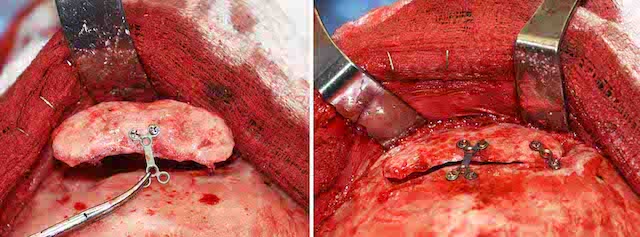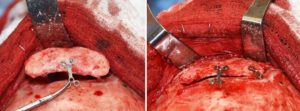Background: The frontal sinuses are responsible for the shape of the brow bones. Men have larger frontal sinus cavities and hence more prominent brow bones. While some may think that the brow bones are solid bone they are actually just an expanded air cavity with a covering of bone that is only several millimeters thick. The expanded air cavity is usually less than 10ml in size. But in men with an overgrown frontal sinus it sticks out like a bubble in the lower forehead and creates a hyper masculine or Neanderthal appearance.
Of the two techniques available for male brow bone reduction, overwhelmingly the bone flap removal and setback technique is the more effective. This can always create a setback of 7 to 10mms as opposed to a burring technique which can only accomplish less than 50% of that amount if not less.
In the so called osteoplastic flap technique (bone removal and setback), there are several key steps in performing the procedure at the brow bone level. The most important preoperative decision, however, is not about the bone but about the incisional access. Since good exposure is needed to perform the procedure, the placement of a semi-coronal or near-coronal scalp incision is needed. This is a major consideration in the male and, while there are some exceptions for incision placement in some men (hairline incision, mid-forehead and direct eyebrow approach), the need for the coronal incision exists is many men.
The following case illustrates the basic technique for the bone flap technique for male brow bone reduction.
Case Study: This young male was bothered by his prominent brow bones. His forehead was not abnormally sloped backward. So it was determined that only brow bone reduction would be needed. (no forehead augmentation needed)
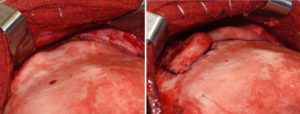
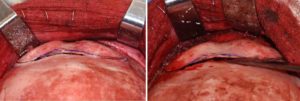
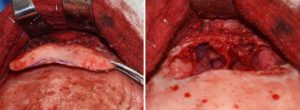

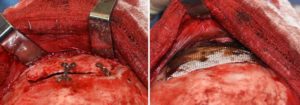
Prior to closure a double layer of a resorbable collagen mesh was applied over the bone flap to help create a temporary frontal sinus seal. The forehead/scalp flat was then closed over a drain.
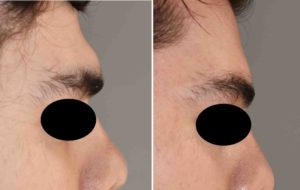
Case Highlights:
1) The enlarged male brow bone is due to an over pneumatized frontal sinus.
2) The bone flap removal and setback technique is needed in men that need more than a 2 to 3mm brow bone reduction.
3) A single piece brow bone flap removal, if possible, offers the ideal male brow bone reshaping/reduction method.
Dr. Barry Eppley
Indianapolis, Indiana

